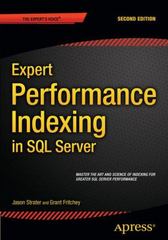Answered step by step
Verified Expert Solution
Question
1 Approved Answer
main should remain as is stack class Implement template stack class that is capable of storing integer and string values. Write both header and implementation
main should remain as is
stack class
Implement template stack class that is capable of storing integer and string values. Write both header and implementation in one file (stack.h).
Private data fields:
- data: An array with maximum size of 20. (Declare a constant in stack.h called MAX_SIZE and set it to 20.)
- size: stores the current number of elements in the stack.
Public interface:
- stack(): constructs an empty stack.
- push(T val): inserts a new element (val) of type T (T could be integer or string) into the data. If the data array is full, this function should throw an overflow_error exception with error message "Called push on full stack.".
- pop(): removes the last element from data. If the data array is empty, this function should throw an outofrange exception with error message "Called pop on empty stack.".
- top(): returns the top element of stack (last inserted element). If stack is empty, this function should throw an underflow_error exception with error message "Called top on empty stack.".
- empty(): returns true if the stack is empty otherwise it returns false.
main.cpp test harness
Use this main.cpp file for testing your stack.
#include #include #include "stack.h" #include using namespace std; int main() { cout << "Enter a test number(1-5): "; int test; cin >> test; cout << endl; //tests constructor, push, pop, top and empty if (test == 1) { try{ cout << " stack1 constructor called"; stack stack1; if(stack1.empty()){ cout<<" stack1 is empty."; } else{ cout<<" stack1 is not empty"; } cout << " push 10"; stack1.push( 10 ); cout << " push 20"; stack1.push( 20 ); cout << " push 30"; stack1.push( 30 ); cout << " stack1 top: "; cout< stack2; cout << " stack2 top: "; cout< stack3; cout<<" pop from empty stack "; stack3.pop(); cout << endl; } catch(underflow_error & e){ cout< stack4; cout << " push 20 elements"; for(int i = 1; i <=20; ++i){ stack4.push(i); } cout<<" stack4 top: "; cout< stack5; cout << " push A"; stack5.push("A"); cout << " push B"; stack5.push("B"); cout << " push C"; stack5.push("C"); cout << " stack5 top: "; cout< Step by Step Solution
There are 3 Steps involved in it
Step: 1

Get Instant Access to Expert-Tailored Solutions
See step-by-step solutions with expert insights and AI powered tools for academic success
Step: 2

Step: 3

Ace Your Homework with AI
Get the answers you need in no time with our AI-driven, step-by-step assistance
Get Started


